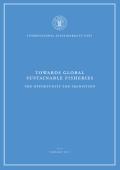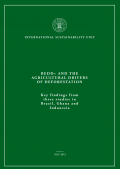
This report presents the analysis and findings of the ISU’s research and consultative work in seeking to understand what is necessary to achieve more sustainable fisheries worldwide. The report sets out case studies and thematic analysis in order to provide context for the work of the ISU Marine Programme. It also sets out the economic, social and environmental case for change.
The world is at a juncture where future financing for forests and REDD+ seems uncertain, and there is a clear risk of a narrative of disappointment setting in. These pressures demand a redoubling of international efforts.
In light of the new challenges and the lessons learned, this paper suggests several pathways to be considered for the next phase of financing of efforts to protect forests, and to enable forest countries to adopt alternative development pathways in which deforestation is reduced. These pathways include the need to:

In order to ensure global food security and avert dangerous climate change, the world faces the pressing dual challenge of both protecting its remaining rainforests and enhancing food production in sustainable and resilient ways. Successfully achieving this would provide multiple co-benefits, including safeguarding the well-being and livelihoods of forests peoples; protecting the biodiversity and ecosystems provided by forests; and reducing rural poverty.
The objective of this study is to identify the key opportunities for green growth in Egypt, discuss the framework conditions necessary for achieving them, and make policy recommendations. Green growth opportunities are defined as those which achieve the triple goals of (i) economic growth, (ii) social inclusivity, and (iii) environmental sustainability or improvement. The social dimension is addressed by prioritising these opportunities in terms of their potential to generate jobs, thus allowing the benefits of these new opportunities to be shared in a socially inclusive manner.
Poverty reduction and economic growth can be sustained only if natural resources are managed on a sustainable basis. Greening rural development can stimulate rural economies, create jobs, help maintain critical ecosystem services and strengthen climate resilience of the rural poor. In the context of this report, greening rural development refers to five broad green outcomes: improved natural resource conservation; increased efficiency of resource use; reduced negative environmental impacts; strengthened climate resilience of communities; and contribution to climate change mitigation. According to the report, these outcomes can be delivered by rural development schemes by a) investing in regenerating natural resources, b) mobilising and developing the capacities of community institutions to utilise natural resources in a sustainable manner, and c) aggregating ‘small initiatives’ in several locations to improve natural capital on a macro-scale.
This summary was prepared by Eldis.
